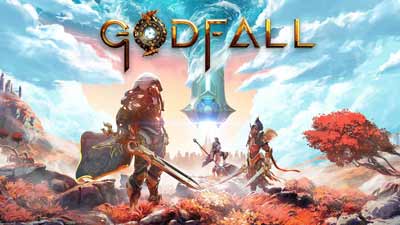
When a brand new generation of consoles arrives, anticipation surges for the launch lineup of each platform.
That excitement often leads to disappointment, with titles slipping into the dreaded “launch window” targeted release, rather than day and date with the console itself. With the new PlayStation, rarely has there been such variety in the platform’s slate of launch titles.
A promising combat system
Godfall was the first of these titles to be officially confirmed as a PlayStation 5 launch game. As with many launch titles, the so-called ‘looter slasher’ struggles to provide the substance that the spectacle promises. Underneath a promising combat system is sluggish movement and a simplistic story – a battle between a fallen king Orin and his brother Macros who is attempting to become a god.
The most promising aspect is the combat. The combination of attacks and special moves look fantastic when strung together, and the punchy finishing moves feel satisfying – if they land. The game manages to maintain that feeling across an arsenal of swords, spears, and hammers amassed from carving up your enemies.
Godfall is excellent at offering you options to fell your foes. One of the best methods of doing so is through quick attacks which build up a meter on an enemy’s health bar – then deploying a more powerful attack to drain that meter in one stroke instead of using combos. The skills board contains five tiers per ability, allowing for plenty of growth and customization as you develop. Each weapon and accessory can be upgraded, with a forgiving drop rate on resources.
Disappointingly sluggish
Yet, for a title that is so reliant upon its combat, sluggish movement often undermines its depth. Targeting enemies is unreliable while swapping between them is even more frustrating. This often results in cumbersome contests which fail to bring together the various components to which there is much depth. As a result, the combat is hamstrung, becoming less enjoyable in practice.
The enemies themselves generally lack intelligence, though the boss fights buck this trend. Each encounter with one of Macros’ generals adds a welcome layer of strategy to the combat, forcing you to adapt your own style in order to beat them. If the fights are too difficult, the checkpoints are pleasantly forgiving. The boss’ health bar is divided into three so that if you die and you’ve drained a portion, you can respawn with full health and that segment will still deplete if you die. Though the boss battles still suffer from the aforementioned clumsy movement, these fights feel close to what the game aimed to offer consistently.
These battles often take place in gorgeous surroundings. Whether it’s in the wild with lush shrubbery or the more polished temples, Godfall looks stunning. It’s perhaps the only area that can truly be called next-gen. The visual effects from attacks and the enemy death animations demonstrate the kind of visual fidelity that PS5 is going to bring. There’s clearly an emphasis on spectacle. It grants a sort of wonder as you wander through the various locations.
The story falls short too
Sadly, these environs are also squandered. In addition to the main story, there are additional challenges where you can gather randomized resources. The game strikes a fine balance between extra quests and scope to explore, but it also feels like a missed opportunity. Much of the world’s history is told through codex entries collected as you wander through the maps, but stopping to read takes you out of that environment. They are interesting and well written, but reading them from a menu makes the maps feel less lived in. The option of multiplayer may help alleviate this problem to a small degree. The ability to play co-op is unlocked after beating the initial tutorial sections and arriving at the Sanctum – a hub area that is used as a staging ground between missions.
Godfall’s story suffers from a spectacle-over-substance approach, with much of the initial setup failing to land. Considerable emphasis is placed on the direness of the situation and the importance of stopping Macros from becoming a god. However, the words feel empty with little done to establish the characters or their conflict outside of the opening cinematic.
This renders it a difficult conflict to get invested in from the beginning, with little else to convince you going forward. There’s an emphasis on telling the story, rather than showing it. With a more satisfying narrative, it might be easier to overlook the flaws that undermine the combat, or vice-versa. In the end, Godfall doesn’t quite excel at either. So whether you come for the combat or the story, your experience remains stunted.
The end-game content, Dreamstones, seeks to provide a new spin on the missions from the campaign. However, having found the narrative underwhelming in the first place, the motivation to revisit them is lacking. It all leads to an experience that fizzles out with a whimper, rather than the bombast that the game had promised.
Conclusion
Godfall is the epitome of a traditional console launch title. It’s an accomplished product with stellar visuals and loud presentation, but beneath that is an often frustrating and cumbersome experience.
Ultimately, this is perhaps the problem with committing to being a launch title for a new console. There are the makings of a stronger game here. Given more time, the vision might have come to fruition.
Game Freaks 365 received a free review copy.
